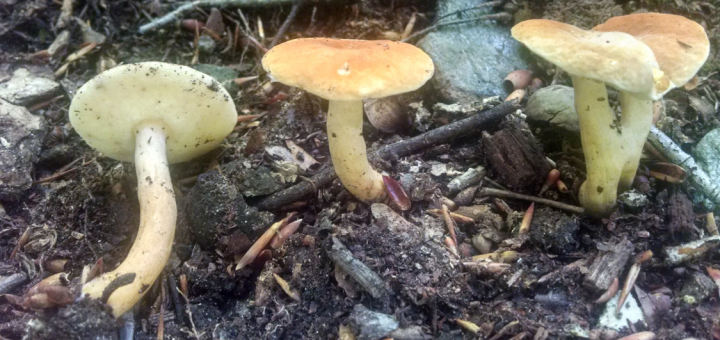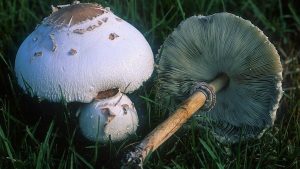#059 Tremella mesenterica, Witch’s Butter
One day as you check your mailbox you notice a yellow smear on the entrance to your house (for example a wooden gate). After retrieving your mail, you take a closer look and see that it’s a yellow gelatinous lobed blob – Witch’s Butter! Oh no, you think, I’ve been hexed by a witch! Knowing just what to do, you run back to the house, collect a few straight pins, and stab them through the offending substance to drain its juices and kill the spell. Unfortunately, this method doesn’t work very well for two reasons. First, this blob is actually the jelly fungus Tremella mesenterica. Like all jelly fungi, it is specifically designed to survive repeated dehydration and rehydration. Second, the main body of the fungus is still living inside the wood; unless you replace the wood, the mushroom will probably reappear in the same place!
















![#011: Characteristics of Kingdom Fungi [Archived]](https://www.fungusfactfriday.com/wp-content/themes/hueman/assets/front/img/thumb-small-empty.png)

